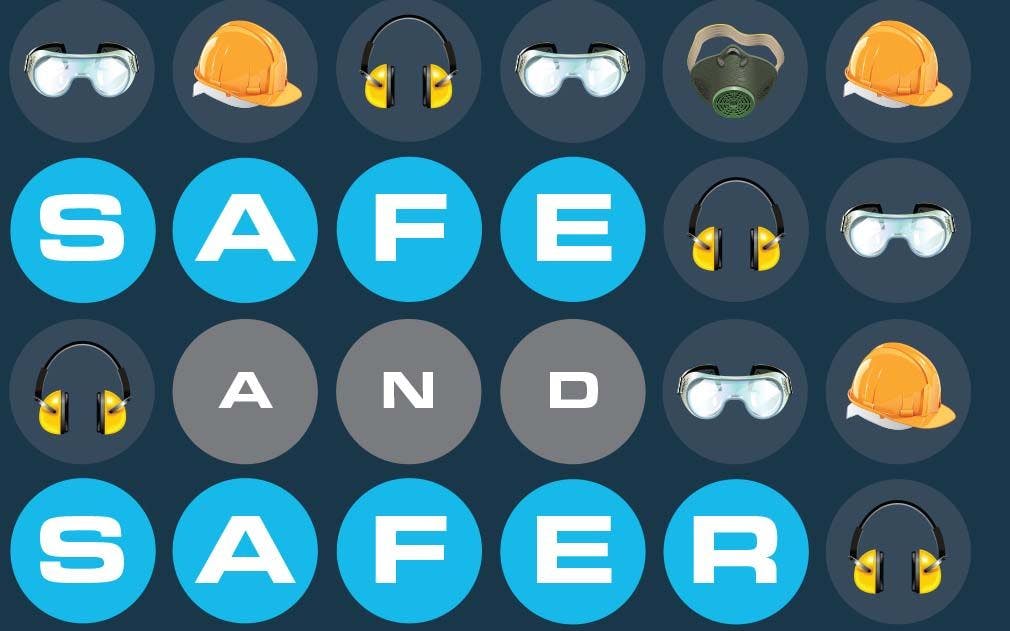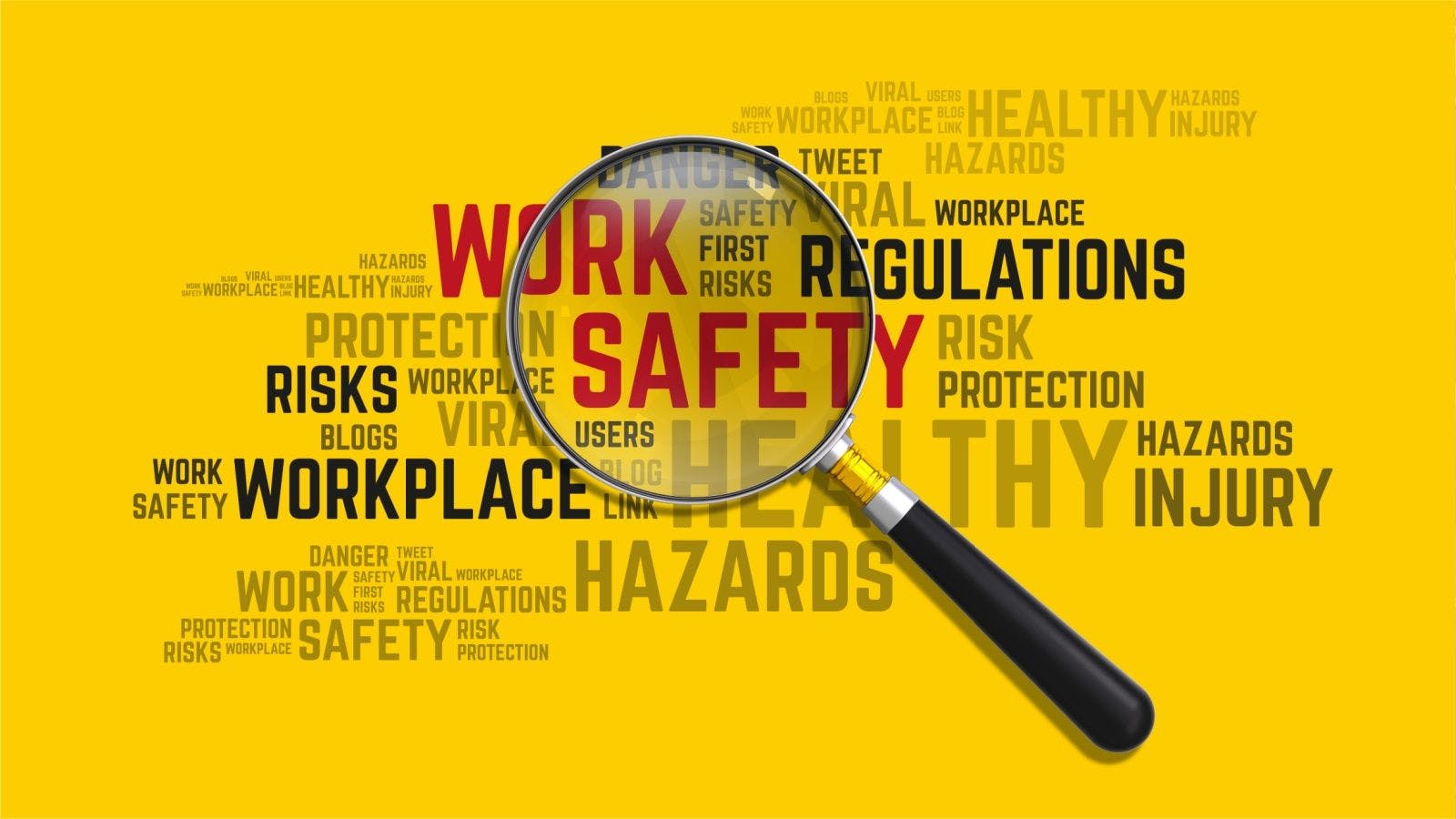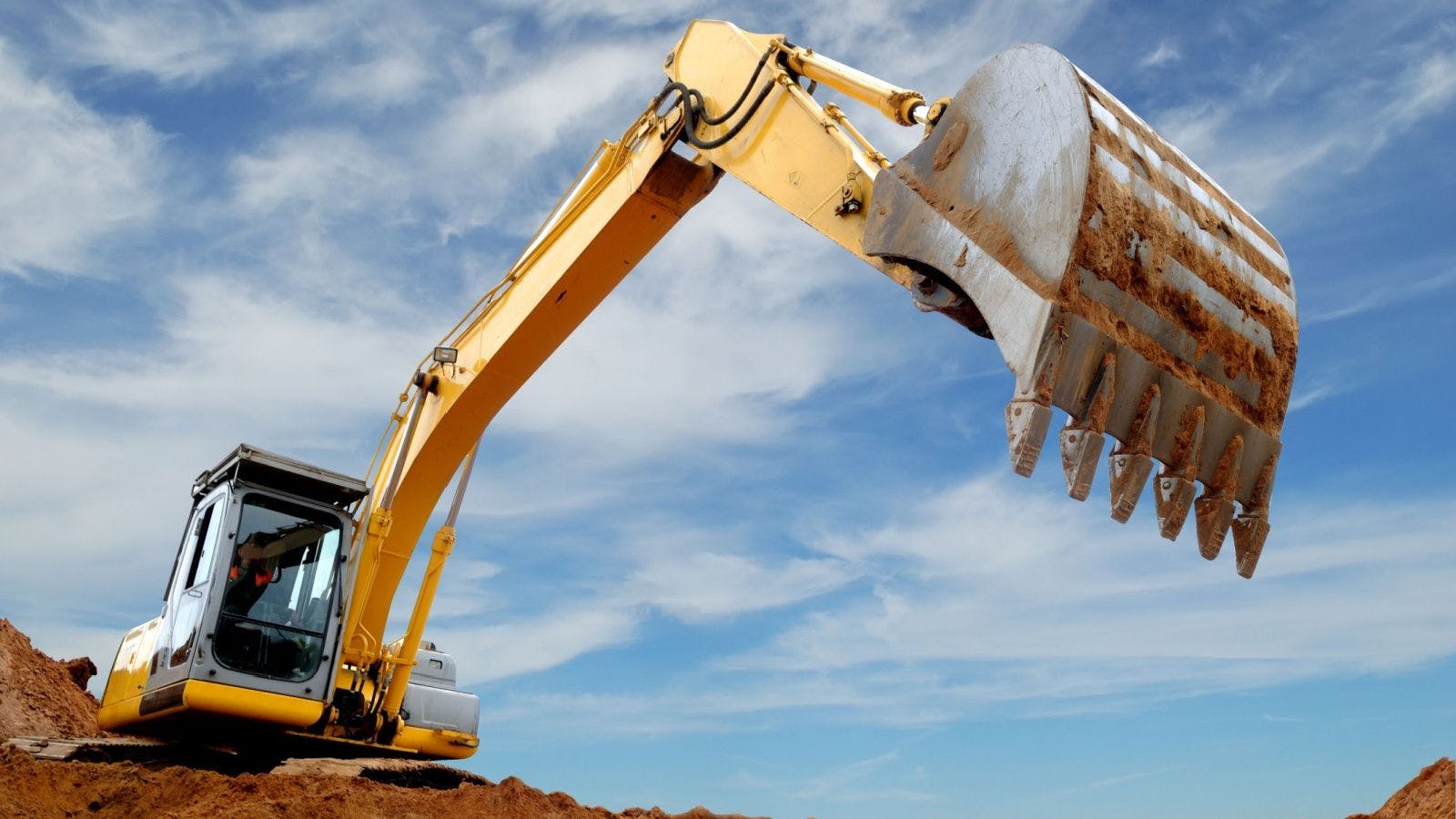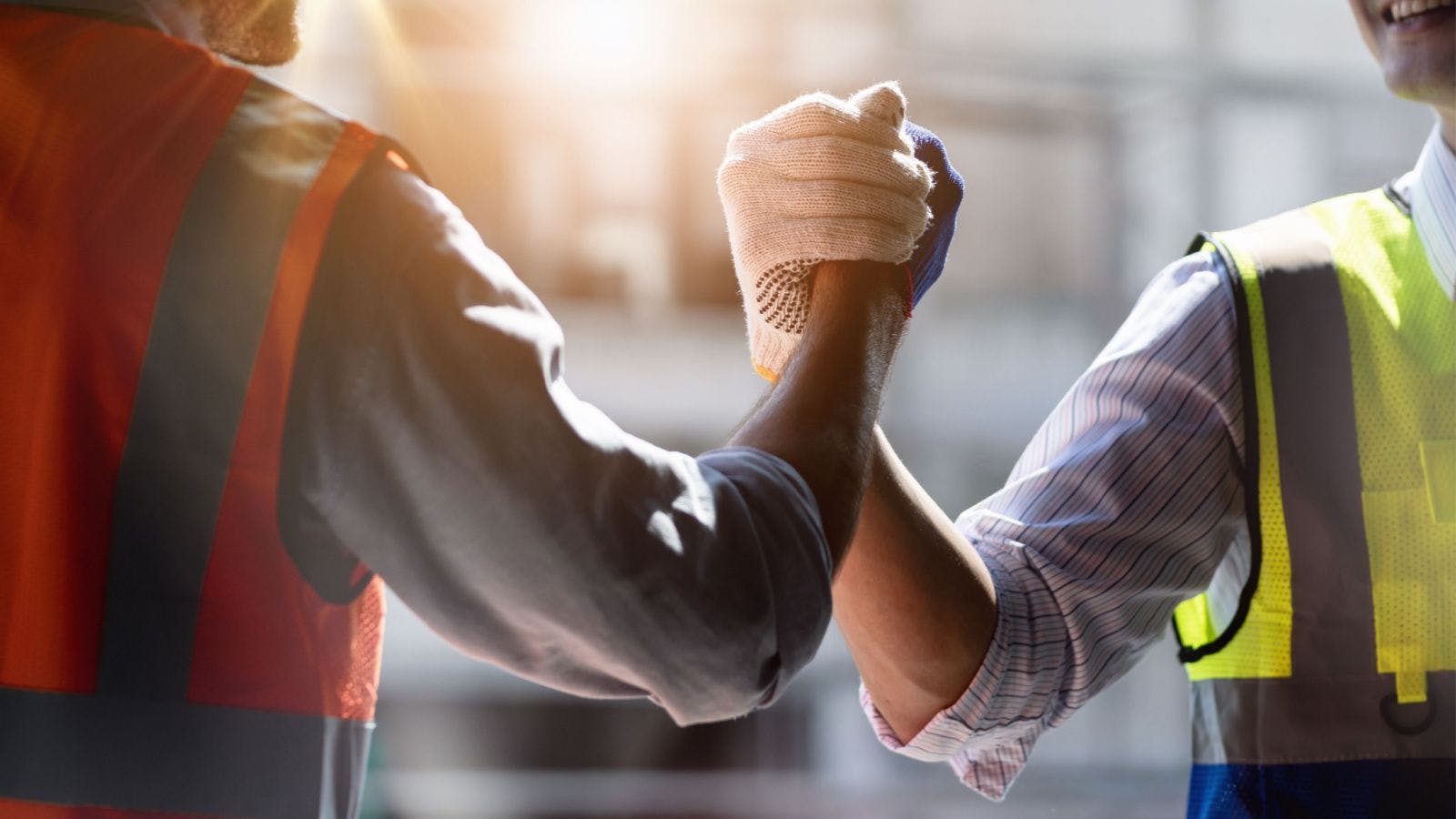
Safe and Safer
"There’s always room for improvement” is a cliché that applies to nothing if not health and safety in the construction industry, where doing things differently—doing them better—means preventing injuries and saving lives. In that spirit, Construction Executive asked five industry safety advocates a simple question: What is one thing about construction safety you’d like to see change?
Ranging from sweeping to granular, their answers all focus on the people underneath the hard hats. As Miller & Long’s Frank Trujillo notes: “‘Safety first’ has been a mantra in the industry for decades, but I think companies have forgotten what that means. It’s about people—who they are, what they care about, who they love and their wellness.”
But each of our experts—all of them representing companies who participate in ABC’s STEP Safety Management System —has a different idea of how safety in the construction industry can and should evolve, and what needs to change. Their answers below have been condensed and edited for clarity.
Get Female-Fitting PPE—and Look at Those Fatigue Reports
MELANIE LAIRD, Chief Strategy Officer, Field Control Analytics, Dallas
What is one thing about construction safety you’d like to see change?
There is very little emphasis right now on correctly fitting PPE for females in construction. And that does lead to accidents, and that’s a safety hazard on the jobsite when your personal protective equipment doesn’t fit correctly. So, all employers and general contractors need to account for more women joining the construction arena. There’s still a big deficit, but more women are entering construction every day.
I think the other thing is data. There’s such a big emphasis on construction data and what’s out there now trending in the workforce. There is a lot of focus not only on productivity but on safety. But one thing that I don’t see a lot of emphasis on are fatigue reports. They think of how much time people are spending on jobsites in terms of productivity, but nobody is paying attention to the guys that are spending more than nine hours working on the jobsite.
We see data where some guys are spending more than 60 hours, more than 13 hours a day on the jobsite. And what is that doing fatigue-wise? Those are absolutely leading indicators that people aren’t looking at. We should be really diving into fatigue reports and what kind of hazards that’s creating when people are just exhausted.
Can you identify some ways to make those changes?
There are so many PPE vendors out there. I know when I’ve looked at my company, it’s so much more expensive. I think because people order in smaller quantities, maybe [the PPE companies] don’t need to make as much of a profit initially. Just make it more available, more accessible to companies.
On the fatigue reporting, to me, it’s an education issue. All of this data exists, we’re just not looking at it in the right way. Instead of giving all of this data to the operations teams, to the superintendents, to the project-management teams, you’ve got to get it to the safety teams. You’ve got to educate them on what you can do with this data, how you can use the data.
Design Safety Into Every Project
MARSHALL PANCOAST, Safety Director, Walker Construction, Spokane, Washington
What is one thing about construction safety you’d like to see change?
What I see consistently is safety by design—design teams, architects and engineers looking at the health and safety of workers and the end users that are going to use their facility. A lot of times, their view is to put up a beautiful structure, and safety systems aren’t even a factor in what they’re doing.
It becomes something that we have to engineer potentially. We have to get creative where the systems don’t take those things into account. I would like to change … giving some education to the architects, the design team, so that safety is a thought process from the very beginning, from the structural design, from the architectural design of the building itself.
Can you think of some specific examples where things could be installed in those preliminary stages by those people?
A very common one that we deal with is a parapet wall. A lot of times our parapet walls are built to a specification; it’s about 32 to 36 inches, and it means that we have a requirement for fall protection. If the parapet heights do not reach 39 inches, we either have to have a standard guardrail system or we’re putting people in personal fall-protection systems.
The same goes for window height design at 36 inches—we still have to put up a standard guardrail. There are precast stair treads that have become increasingly popular. And they’re a potential lifting hazard. And so, we have had to engineer systems to be able to lift them and hoist them, so that we’re not putting people into some ergonomics issues.
Taking a step back to the fall-protection piece, when they don’t have the correct height parapet walls, they also don’t a lot of times have permanent fall-protection anchors in their design. And so, the end user is having to put their people on their roof systems for any kind of maintenance work, and they’re out of compliance for fall protection as well.
I think even from the environmental side, we see a lot of challenges. I know that there are LEED certifications for environmentally design-friendly buildings, and seeing something like that from a safety and health standpoint would be an awesome step toward making the safety by design a higher value for the design team.
Don’t Forget Core Behavioral Habits
THOMAS “MURPH” MURPHY, Vice President, Valley Sand and Gravel Division, Power and Construction Group, Scottsville, New York
What is one thing about construction safety you’d like to see change?
The biggest thing that we see as a challenge has been the core behavioral habits. We do all the proper training with all of our people and give everybody the tools they need, but we still see people—and it tends to be the older employees with some older-style thinking and behavioral habits—not having the best way of operating things or running a project. Then you tend to see some of the younger employees say, “Well, they’re doing it that way. Why can’t I do it that way?”
How does the industry go about changing that?
We’ve hired a corporate safety trainer who has field experience—he actually had worked for our company in the past in the field and then moved into safety. So, he understood our culture and had been very heavily involved in STEP in the past with us. His job right now is going around to all the jobsites. [While we do have] an outside consulting team that does safety visits for us, [he] goes out and [does] observations, sees the things that we’re seeing and then how do we correct these.
We are investing in a new corporate headquarters. It’s 20,000 square feet, and 10,000 square feet of this corporate headquarters is going to be a training center. The reason for this is, we’re seeing so many young people that are coming into the industry now, but they have no training, and we realized we needed to go back to basics—back to basics as far as even utilizing how to use the proper power tools.
We’ve taken 10,000 square feet of this corporate training center and turned part of it into classrooms and a practical room. From our electrical divisions, our gas, our aggregate divisions, fall protection, trenching—we set it all up in this training center. When we onboard somebody new, we can get them into the proper training right away. It may be that they have a little bit of experience, so they need only two or three days, or they need a week or two in this training center with proper people to teach them how to utilize things, so we can send them out there safely.
Our corporate trainer also sees some habits that need to be corrected. He’s designing classes to bring in these people and to help correct these habits and find ways, whether it be in the classroom or practical, [to show] how things need to be done now, that this is the safest way to perform these tasks.
Focus on Total Human Health
LYNN STITH BENNETT, Managing Principal and Chief Strategy Officer, Coakley & Williams Construction, Bethesda, Maryland
What is one thing about construction safety you’d like to see change?
As we think about safety through the lens of total human health, I think that there’s a real opportunity to improve construction site facilities throughout our industry. Every person deserves clean toilet facilities, washing facilities, a rest area to eat lunch, get out of the weather, get relief from hot and cold temperatures, a place to take a break and engage with colleagues.
At Coakley & Williams, we’re working with our trade partners to enhance welfare amenities on our jobsites to facilitate a happier, healthier, more inclusive environment and contribute to people’s mental health and physical wellbeing.
As an industry, we must focus on some of those specific barriers to attracting women to the workforce. We want to see those numbers continue to grow and have contractors really consider, how do we accommodate new or expecting mothers who are working in the field? How do we enhance their welfare? [Exploring] the need to perform hazards around their jobs—what kind of chemicals are they working with, and modifying work duties accordingly. And just providing reasonable break time and clean and private spaces for nursing mothers to pump while on jobsites. How do you accommodate those things that are specific to opening up the trades to women?
With all of the workforce challenges facing our industry and our need to attract talent, site facilities can go a long way to improving the image of construction, as well as ultimately improving total human health.
How effective has it been so far in terms of implementing these programs on jobsites?
It’s a fairly new initiative for us as well as for many in the industry. We’re implementing that on jobsites. We’re trying out a couple of different types of toilet facilities and washing facilities. It’s a challenge. Our jobsites are not all the same. We don’t always have room to add trailers if you’re working in the city or [other places], so the accommodations change from jobsite to jobsite.
But I think the first step is raising awareness. Right now, we’re trying out a couple of different types of trailer facilities, trailer-type toilets or just separate washing areas. We’re beginning to put these onto jobsites, and [it’s] really a focus for us in 2023.
Remember What ‘Safety First’ Actually Means
FRANK TRUJILLO, Vice President of Safety, Miller & Long, Washington, D.C.
What is one thing about construction safety you’d like to see change?
The one thing about construction safety that I’d like to see change is putting the worker first. “Safety first” has been a mantra in the industry for decades, but I think companies have forgotten what that means. It’s about people—who they are, what they care about, who they love and their wellness. And wellness is something that safety departments and professionals have segregated from their daily awareness, their daily activities. It’s something that they’ve typically farmed out to HR. And that’s got to change.
When there’s an accident on a jobsite, you do an incident review or a root-cause analysis. The go-to is usually more training. But it never goes deeper into the situation of, did anybody talk to the worker? Is the worker okay? Can the worker explain how they’re doing? Was there anything going on with the worker that caused them to maybe not be paying full attention? Were they distracted? Was there something going on at home? Are they in good health? Do they have financial problems? Is there something that’s weighing on them that’s causing them not to be fully present in their work?
That’s a question that’s got to start getting asked. It’s [usually] minor things that you’re investigating [like first aid or near-misses] but have high potential for severity if you’re not taking that opportunity to dig deeper and figure out what really caused this employee to do something.
Can you expand on ways to implement that change?
It’s all about creating channels of communication. I think there’s got to be some sort of training program for superintendents and foreman leadership on the jobsites to be able to recognize what a mental-health stress situation looks like.
Are we getting trained on how to manage a mental-health crisis? Are we being trained on how to recognize a mental-health crisis? That’s going to be an important thing going forward that we push out as a value proposition from ABC and the chapters—to help companies make that transition over to getting their employees, getting their supervisors able to do that.
Now, that’s one side of the coin. Another channel has got to be easy reporting and anonymous or protected reporting channels for employees to find a way to get help. It could be something as easy as a hotline or a QR code or both on a poster where somebody can call, and it will trigger a voicemail or a text message that’ll go to an HR department or an EAP program, or the QR code takes you to a form you can fill out and request help. And then obviously the important follow-up to that is that everything is quickly turned around; nothing goes out there and just sits.
When employees figure out that they have this channel to communicate without judgment, with full confidentiality, that they can use this and somebody will immediately reach out to them and say, “Hey, are you okay?” Not forcing, just saying “Hey, come to the office or another location, take a break, come off the jobsite, let’s talk and put the time in and figure out what’s going on”—when the word organically gets out to the workforce, it’ll be known. If they have a good experience, it’ll be known. And if you can have a bunch of good experiences stacking on top of each other, it’ll be this thing that maybe people don’t talk a lot about, but they trust.
Related stories








